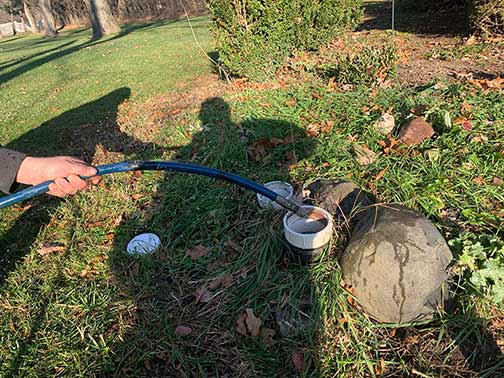
Cleaning your sewer line is the most trusted way to stop drain clogs and blockages in your home. According to InterWest Properties, this simple step will remove all the goo and gunk inside your sewer line, instantly improving its function and prolonging its lifespan.
What you may want to know is how often you should clean your sewer line. Should you have a fixed schedule for cleaning your sewer line? Or is it better to only do it when you see signs of sewer line problems in your home, as some will recommend?
The truth is, the answer is not cast in stone. A lot depends on the type of pipes in the sewer line and their condition. The size of your family and the kinds of sewer line problems you have experienced in the past also matter. Here is a more detailed explanation.
Factors that determine the frequency of sewer line cleaning
- The pipe material
The first consideration is the type of pipe material. If the sewer line is made of clay tiles, you will need to clean it more frequently, because clay pipes are vulnerable to tree root invasion, especially at the joints. These older pipe materials are also more likely to crack if the surrounding soil shifts because they are not flexible. For clay sewer lines, clean them once every 12-18 months.
- The presence of trees in your yard
If your property has trees growing near the sewer line or there were tree roots inside the line the last time you cleaned it, you may want to consider a cleaning frequency of 6 months to one year. That’s because the roots of these trees and bushes can penetrate your sewer line and block it. The alternative to cleaning the sewer line so often is to remove the trees. But that can affect the value of your property.
- A history of sewer line problems
If you have had past sewer line issues in your home but have not replaced the line, cleaning the line once a year is recommended. Especially if the sewer line problems were due to the age of the line, the type of pipe materials, tree root invasion, or weak pipe joints. These problems predispose your sewer line to clogs and blockages. Regular sewer line cleaning will help you keep the issues at bay.
- The condition of the sewer line
The quality of installation plays a role in how often you will clean a sewer line. If the pipes are undersized, you will experience frequent sewer line blockages in your home. Lines with bad joints and insufficient slope will also have more problems. Older or poorly installed sewer lines will benefit from more regular maintenance to prevent drainage issues in the home.
- Usage patterns
A large family means more wastewater will flow into your sewer line. But more importantly, the type of materials entering the line matters. If your household regularly disposes of grease, sanitary napkins, tampons, diapers, or even dental floss in the drains, you must clean your sewer line at least once every 12-18 months to prevent sewer line blockages and sewage backup in your home.
- Local recommendations
What does your city recommend? City officials make recommendations based on local conditions (such as soil type or plants in the region) and the most common sewer line problems experienced by homes in that area. For clay sewer lines and homes with trees growing near the sewer line, the standard recommendation is to clean the sewer line yearly.
The best strategy to protect your sewer line
To maintain your sewer line in optimum condition, you should do a sewer camera inspection annually. This is the most fail-safe strategy for ensuring optimal flow in your sewer line. This inspection gives you detailed and up-to-date information on the condition of your sewer line.
Based on the inspection report, you can decide if your sewer line needs cleaning or not. Performing a sewer camera inspection yearly helps you avoid the stress and anxiety of worrying whether you should or should not clean the sewer line. It eliminates all questions and doubts.
To do this inspection, a plumber will insert a special camera into your sewer line. They will then guide the camera through the line using an attached cable. As it travels through the pipes, the camera will send a live feed of the inside of your sewer line to an above-ground screen.
Subsequently, along with the plumber, you can review these images to assess the condition of the sewer line and decide if you should clean it. Sewer camera inspections do not consume time or cost more money, but the peace of mind you gain from taking this small step is invaluable.
How much does a sewer video inspection cost?
For more information about this inspection method or general guidance on cleaning and maintaining your sewer line, please contact us today.`

